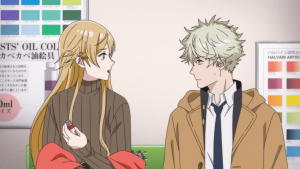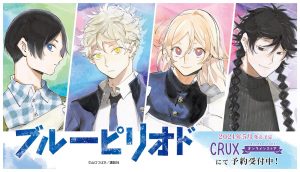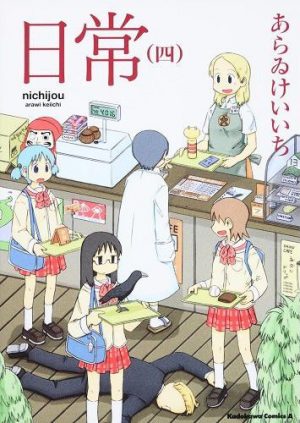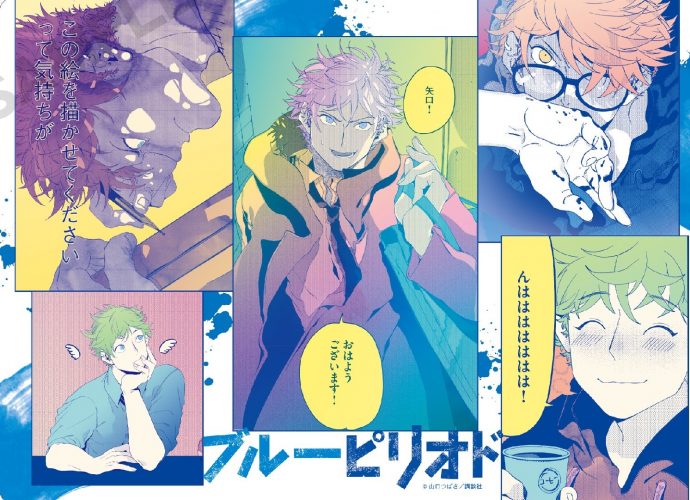
The Fall season graced us with one of the best slice of life titles of 2021, Blue Period. This beautiful love letter to art had us crying with laughter, but also deeply reckoning with the trials and triumphs of the artistic journey. Our protagonist, Yatora, has a lot going against him as he decides in his sophomore year of high school that he is going to bet everything on getting into Tokyo University of the Arts.
Over the course of 12 episodes, we watch Yatora and other members of the cast pushing themselves to achieve similar goals in stellar fashion, dealing with stress, low self-esteem, discrimination, sexuality, identity, and various other themes. Today we’re going to be looking at the artwork coming out of this show, ranking them based on impact, the highly subjective factor of aesthetic appeal, and their significance to the growth of the artist responsible, and the people around them. Here we go, the top 5 most expressive artworks in Blue Period!
Honourable Mention: “Thanks, Mama”

While this is a list of the top five most expressive artworks in Blue Period, the way we’ve defined that means that quite a lot of different pieces could have made this list if argued for enough. Some of the most outstanding artworks done in this show include a pencil sketch Yatora did while watching his mother go about her day working as hard as she does to ensure that the household is happy and healthy. While watching his mother, he notices things he didn’t before; and when he presents the drawing to her, she breaks down crying because of the gravity and sincerity of the emotion being conveyed by Yatora at that moment. It’s too tender to leave this one out, and we tear up just thinking about it!
5. “Angels and Sprites”
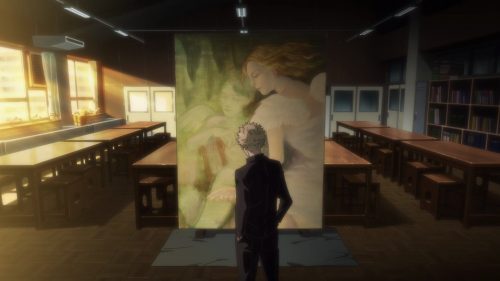
The birthplace of Yatora’s artistic journey is in the art classroom of his high school, where his art teacher prompted her students to create an artwork based on their favourite scenery. At the time, Yatora was reckoning with his social standing and the lack of true connection present in his life, but upon seeing Mori-senpai’s brilliant painting of angels of varying skin tones, Yatora’s interest in art was piqued immediately.
This artwork inspired him to layer colours and paints to create a greater vibrancy to his art assignment. The result was a representation of the Shibuya morning skyline embossed with a deep blue that stretched across the page. The painting was well-received, even by art club members, the art teacher, and even Koi-chan, the only one of Yatora’s friends to correctly identify the subject of his painting down to the very sense of synesthesia Yatora gets from that scene.
4. “Prayer Hands”
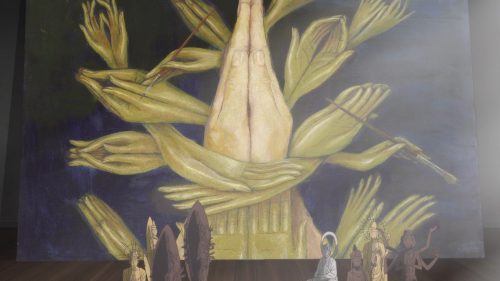
Another beauty by Mori-senpai, the prayer hands painting was an enhanced version of Mori’s central motif with all her paintings: they’re all a form of prayer. Her religious iconography, while leaning towards angels at first, begins to evolve while maintaining a central message. Upon seeing this painting, even though he didn’t even meet Mori at her current institution, Musashino Arts University, the painting itself was skilled enough, expressive and impactful enough to get Yatora out of the rut he found himself in trying to figure out what his own goal is in terms of expression. He learns from Prayer Hands what it means to try to communicate something specific with one’s art.
3. “X Marks the Spot”
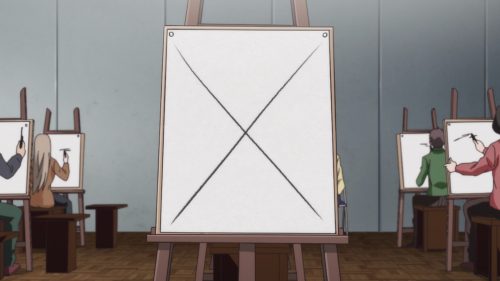
This is going to be controversial, and you know what? That’s exactly what we want. Third on our list is X Marks the Spot, an “artwork” created by Ayukawa Yuka on her first day of exams. This piece was a simple one. She sat down like all the other examinees and when the timer had begun, Yuka took a piece of charcoal and drew one big X on her canvas before grabbing her bag and leaving the venue. It’s not a masterpiece, it’s not even something you can consider a painting, but in terms of art being something that communicates feelings and ideas, Yuka was communicating a deep-seated dissatisfaction with her own artistic journey, the disconnect between herself and her chosen subject of Traditional Japanese Art, which was inspired by her grandmother’s Traditional Japanese art style. Yuka also experiences great turmoil at the hands of her parents, who want her to abandon any and all artistic ambitions.
2. “Melting Sun”
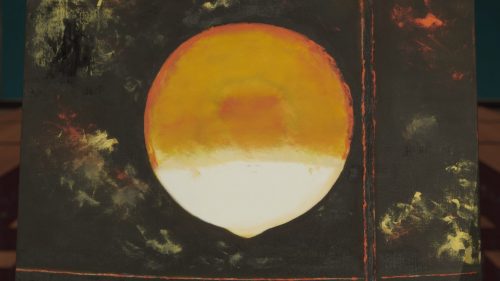
This is perhaps Yatora’s most outstanding piece as far as the combination of his improving skills, and his honing of his ability to communicate something with his art. His frustration with himself, his inability to match his ability with his vision, and one truly inspiring visit to Mori-senpai’s Musashino Arts University. One thing he really has going for him is his ability to use composition as a tool in his arsenal, which really came out here. The result of Yatora’s literal hard work and tears is this piece which features a circle in the centre—a melting sun. To the right is a wire-like addition, accented with the orange from the glowing sun. Both of these elements have a great contrast with the dark, dusk-like background. Yatora uses the rule of thirds in this painting, but it’s also one of the few he creates while in the fabled “Zone”.
1. “True Self”
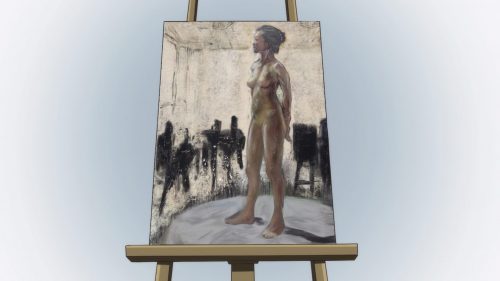
The final entry on the top 5 most expressive artworks in Blue Period is the piece that actually clinched Yatora’s acceptance to Tokyo University of the Arts. The journey was perilous as stress and fatigue had taken over Yatora’s mind and body. He arrived at the second examination ready to take it on; however, he soon collapsed in the venue while en route to his examination room. His condition was serious: his eyes were blurry and painful and it even led to a migraine, but he insisted on pushing on through the pain.
However, Yatora’s fatigue catches up with him and he loses half of the first day to a nap that he really needed. In the second half, he had to make up for lost time, eventually developing an idea to create more detail in his developing portrait of the present nude model: he’d remove paint from the canvas, rather than add to it. The result was a beautiful painting of the scene in that exam room from Yatora’s perspective. If the first exam was about how examinees saw themselves, the second was about how they saw the world.
Final Thoughts
Blue Period is an incredibly memorable title from the latter stages of 2021 and served us a beautiful story filled with triumphs, tender moments, and points to ponder. There were also countless beautiful artworks that left us gasping in amazement at the skill and passion of each character. What were your top artworks from Blue People? Drop a comment below and let us know what you think!
Recommended Post
Blue Period Review - Learning to Be Naked
Recommended Post
6 Anime Like Blue Period [Recommendations]
Recommended Post
The Most Memorable Moments In Blue Period
Recommended Post
Blue Period - Finally, a Nuanced Anime About Art!
Recommended Post




